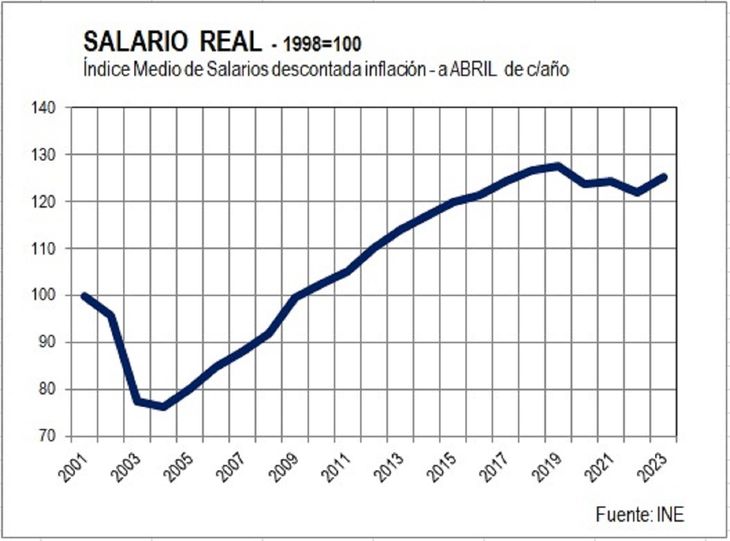The IMS increased 10.5% compared to the same month last year, above the level of inflation in the same period.
The Average Wage Index (IMS) corresponding to April was located 10.5% above its level of a year ago, reported the National Statistics Institute (INE). Since inflation in Uruguay during the same period was 7.6%, the average wage in real terms rose 2.7%, locating 1.8% below its pre-pandemic level.
The content you want to access is exclusive to subscribers.
The rise of the real wages reflects the recovery of the economy after the impact of the pandemic, and fundamentally due to the guidelines of the Executive Branch in the last rounds of Salary Councils, which aimed to recover the real wages lost in the months in which the economy was seriously affected by the health situation and the consequent drop in mobility.


At that time, a bridging agreement was established with an annual nominal increase of just 3%, agreed between the government, employers and workers, to preserve employment. Once the pandemic was over, the salary began a recovery trajectory that continues until now.
graphic.jpeg

Negotiations begin in Wage Councils
Negotiations for the new agreements in Salary Tips and the government will propose completing the recovery, so that real wages have not been lost in the period. All sectors are with real year-on-year increases, in some cases very significant. In health, the real increase is almost 7% in the last year, while education and transportation had a rise of almost 3% Actual YoY.
In the State, the officials of the royal government had an increase of almost 5% above inflation, while employees in state companies showed a rise in the 23%. Commerce, services and industry showed real annual increases of between 2.0 and 2.5%, while bank employees basically maintained their real salary in the last year.
In the case of construction, the sector’s collective agreement expired in March and a new agreement has not yet been agreed, so that in April the workers maintained their nominal wages and that implies a drop in real terms. When the new agreement is signed, they will have the corresponding increase retroactive to April.
Source: Ambito




